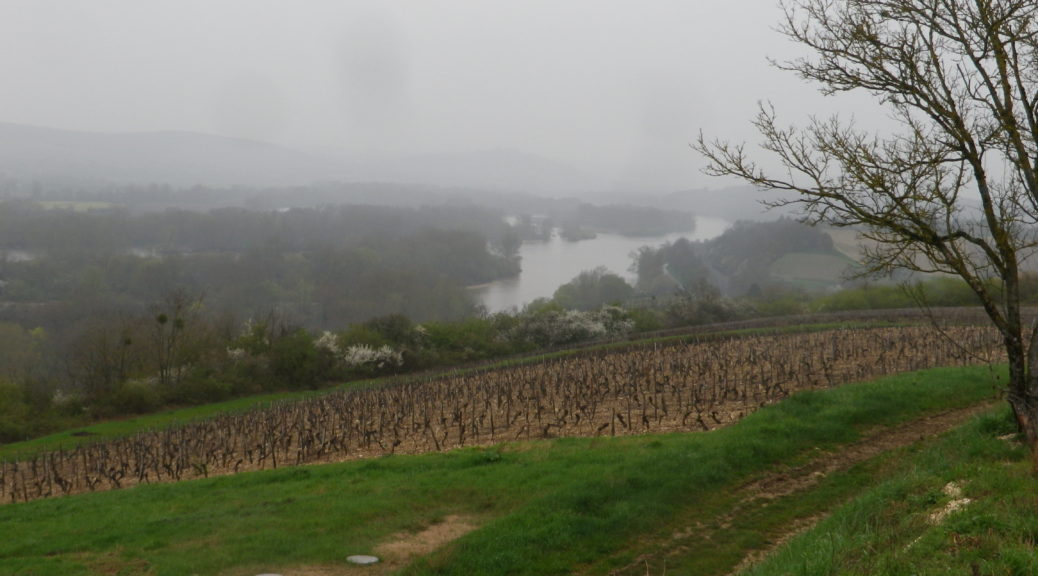Pouilly-Fume and Pouilly-Fuisse are two of my favorite French white wine appellations. Early in my wine-drinking career, I often confused the two. After all, the names are similar. But the wines themselves are from different regions, and quite distinctive. Therefore, I decided to hike the areas to get a closer look. I figured that visually there would inevitably be cues to keep the two villages, and hence the two wines, apart in my mind. This is the story of the first hike.
A hike through and around the village of Pouilly-sur-Loire is a hike through one of France’s best-known appellations: Pouilly-Fume. It lies in along the Upper Loire valley, practically across the river from another famous appellation: Sancerre. Unlike the other Pouilly, with its Chardonnay white wines under the Pouilly-Fuisse appellation, the Sauvignon Blanc varietal reigns supreme in the Pouilly-Fume wines of this region.
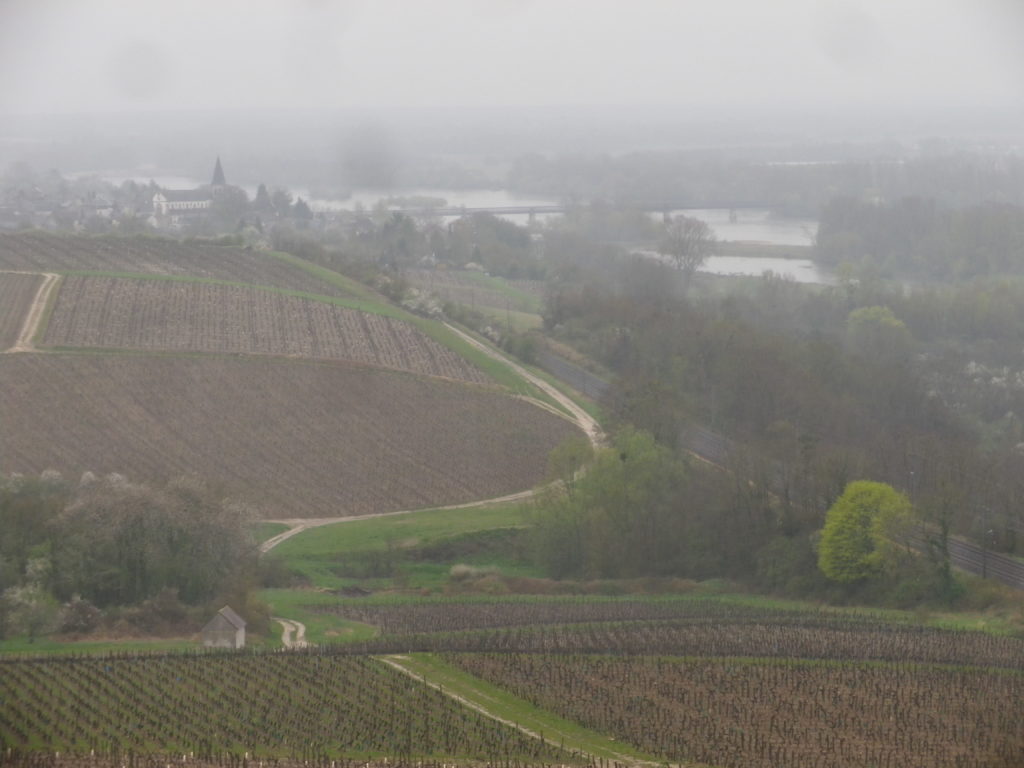
When people think of the Loire Valley, they tend to think of the central Loire Valley’s omnipresent chateaux, and its iconic Chenin Blanc grape in its manifestation in varietal wines of varying appellations. But France’s longest river has many different appellations along it. In the upper Loire Valley, there are also chateaux, and the Sauvignon Blanc varietal wines I was keen to explore.
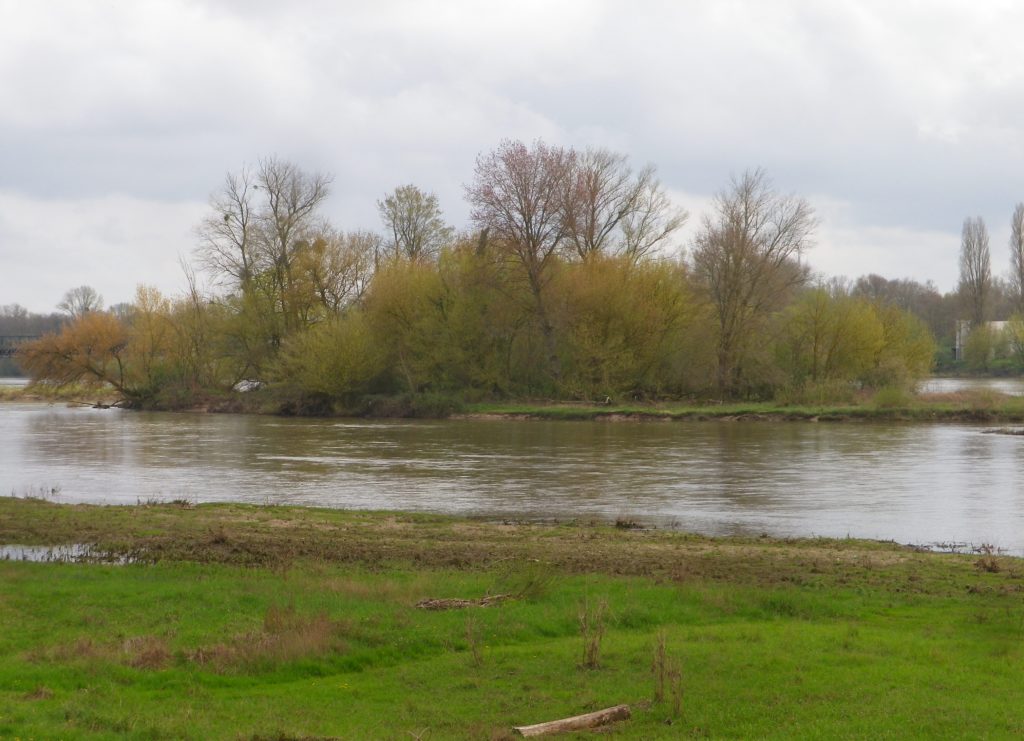
Fume means smoky. In the wine, this refers to the flavor of gunflint minerality that often dominates in wines from the Pouilly-Fume appellation. Fume/smoky was also how the area looked the day of my hike. However, it wasn’t smoke, but veils of fog, and unrelenting waves of low hanging clouds, that dumped rain from time to time, all along the 12 kilometers of this trail. As a consequence, the photographs appear gloomy, which doesn’t do this area justice. In reality, the village of Pouilly was lovely (with lovely people too), and certainly its location on the Loire shows a gentle beauty all its own.
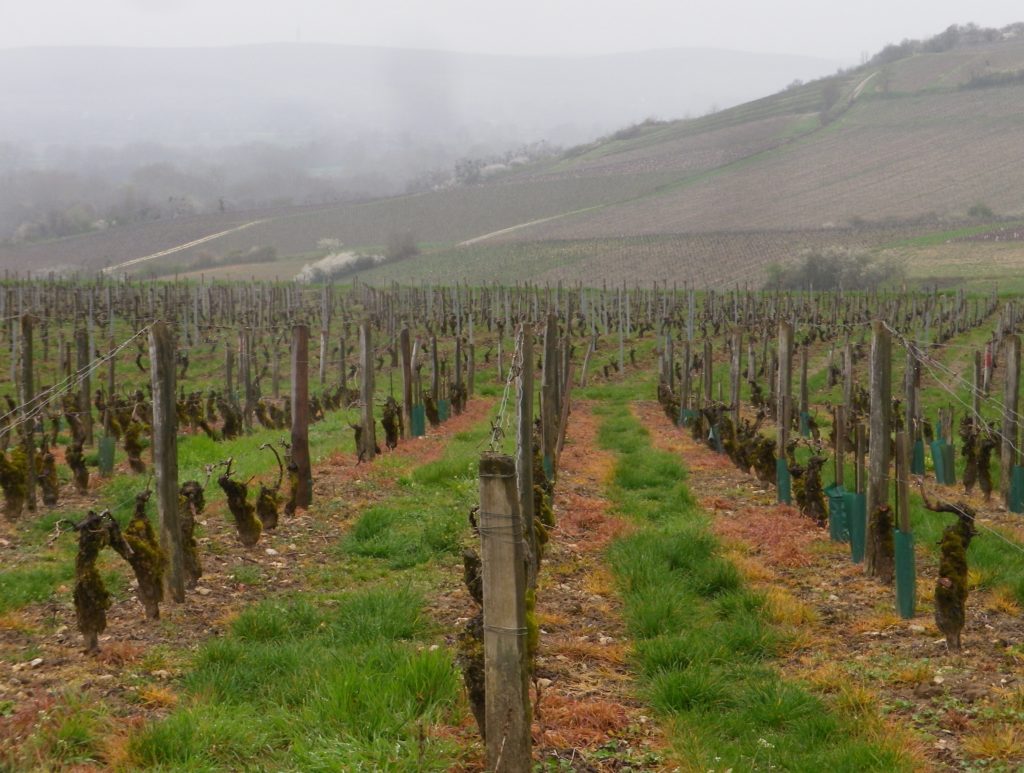
Pouilly is just one of several villages or hamlets that fall within the area covered by this appellation. The trail passed through three others: Les Loges (nowadays incorporated into Pouilly), and the village of Saint Andelain, which has incorporated the hamlet of Les Berthiers. I reached the first of these after following on a Roman era road, on stones that were still visible, although slick with rain and mud.
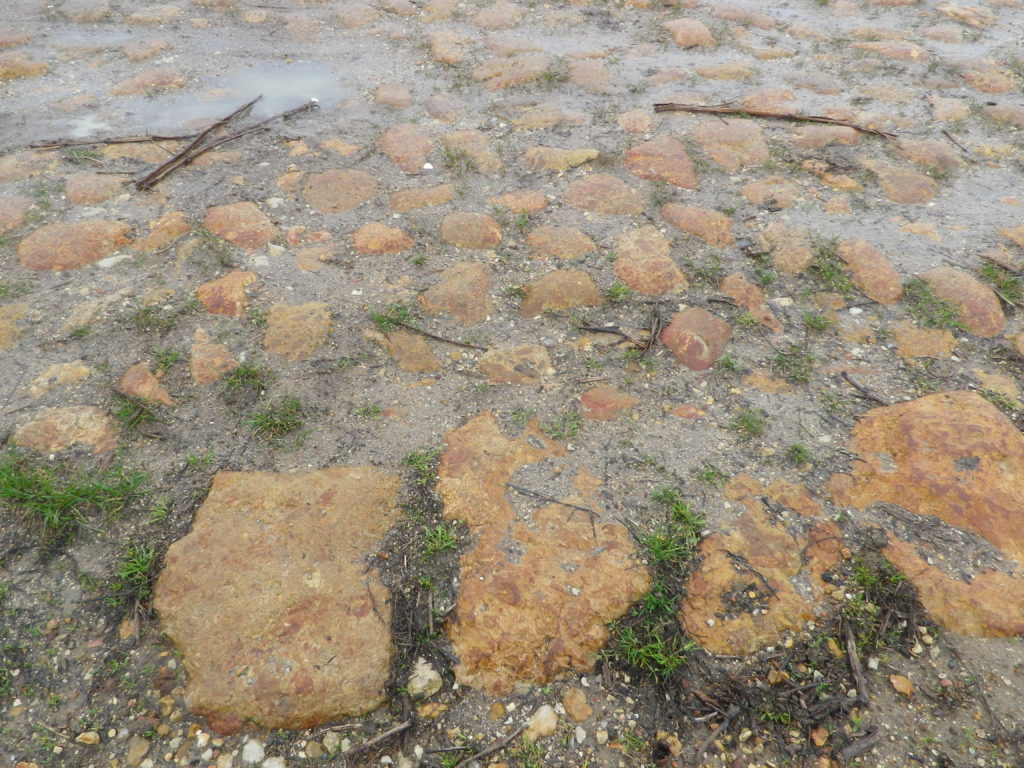
Maybe because the rain let up briefly as I hiked through it, the first hamlet, Les Loges, impressed me favorably. Its one main street leads downhill to a creek which feeds into the Loire, just a hundred yards from the trail. Along the street, I saw an old house, typical of the homes built in the area centuries ago. The vintners, almost everyone back in the day, built living quarters above the cellars. Steep stairs accessed them. The trail leads out of town along the Rue des Pressoirs, Street of the Presses. But I didn’t see any old wooden wine presses, for wine-making operations in Les Loges now take place under modern conditions – and there were several modern wineries in the hamlet.
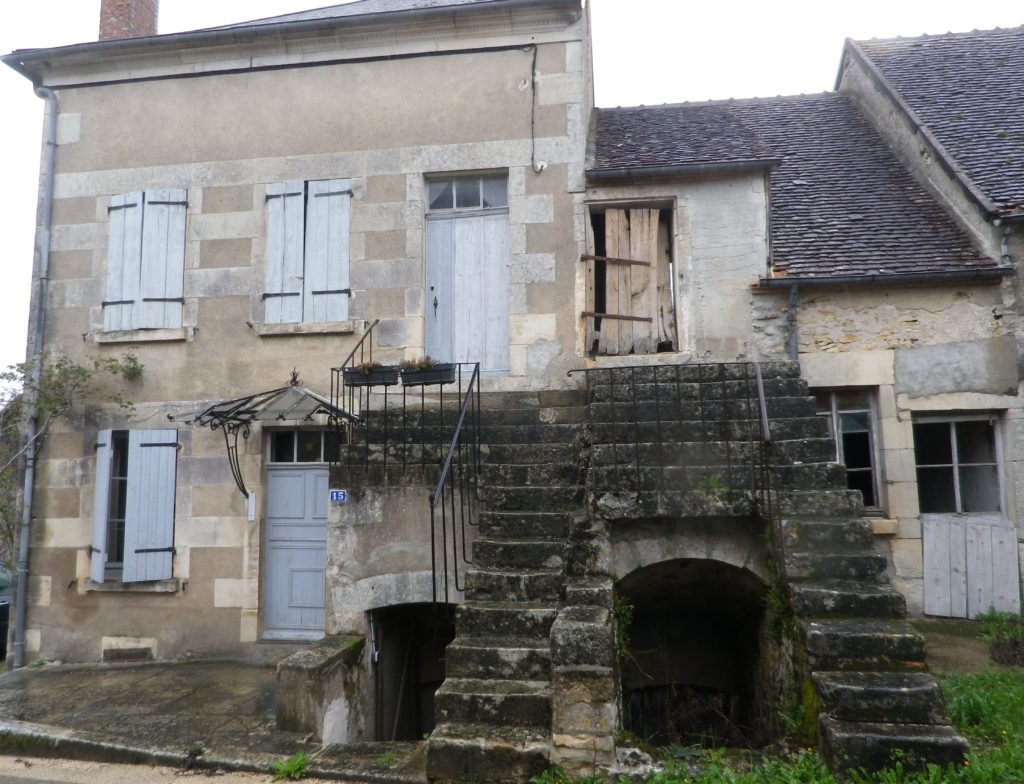
Slogging on through more rain, I began to detest the geology of the area: hard limestone and Kimmeridgian marl. The limestone was slippery, and the wet marl-clay was heavy, clinging like cement to my boots. But these two elements make Pouilly-Fume wine unique. Kilometer after kilometer of vineyard showed limestone rocks set in and atop the soil. Rain pooled in depressions, and the air took on a wet earthy smell.
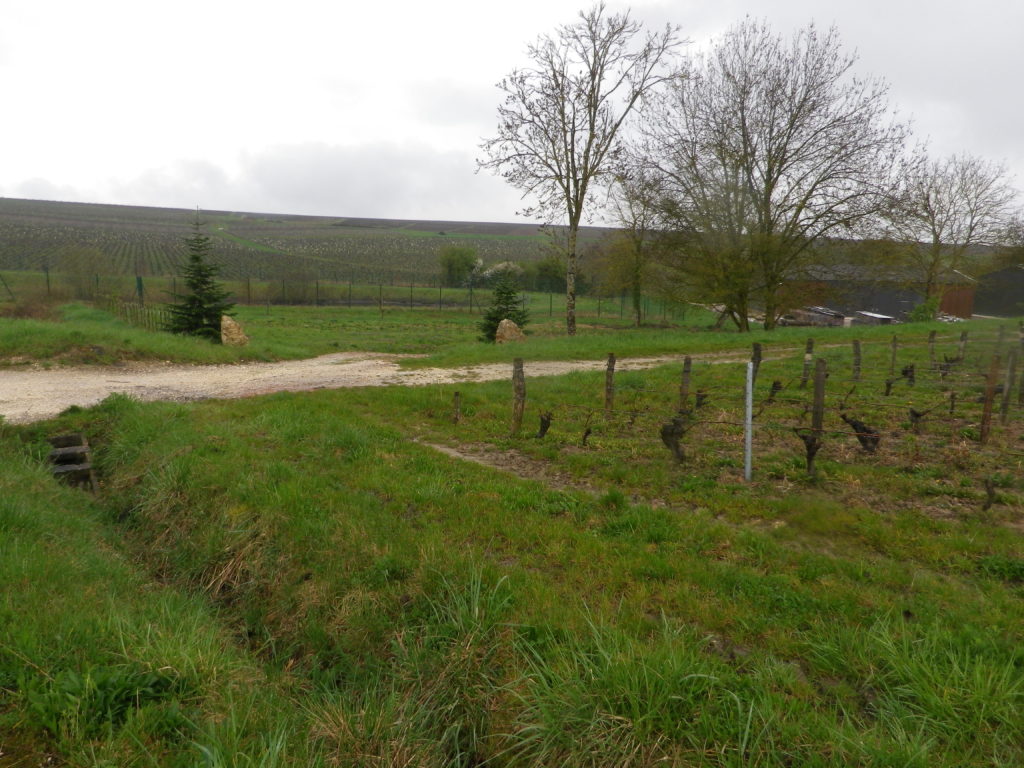
The rain began to lighten as I approached the area known as Le Nozet. A magnificent chateau appeared out of nowhere, set in a ravine. Made of stunningly white stone, most likely the same stuff I had been cursing, it looked every inch a Loire chateau to rival those more famous ones downriver. Now a winery in private hands, it is not possible to visit, but plenty of photo-ops present themselves as the trail loops around it.
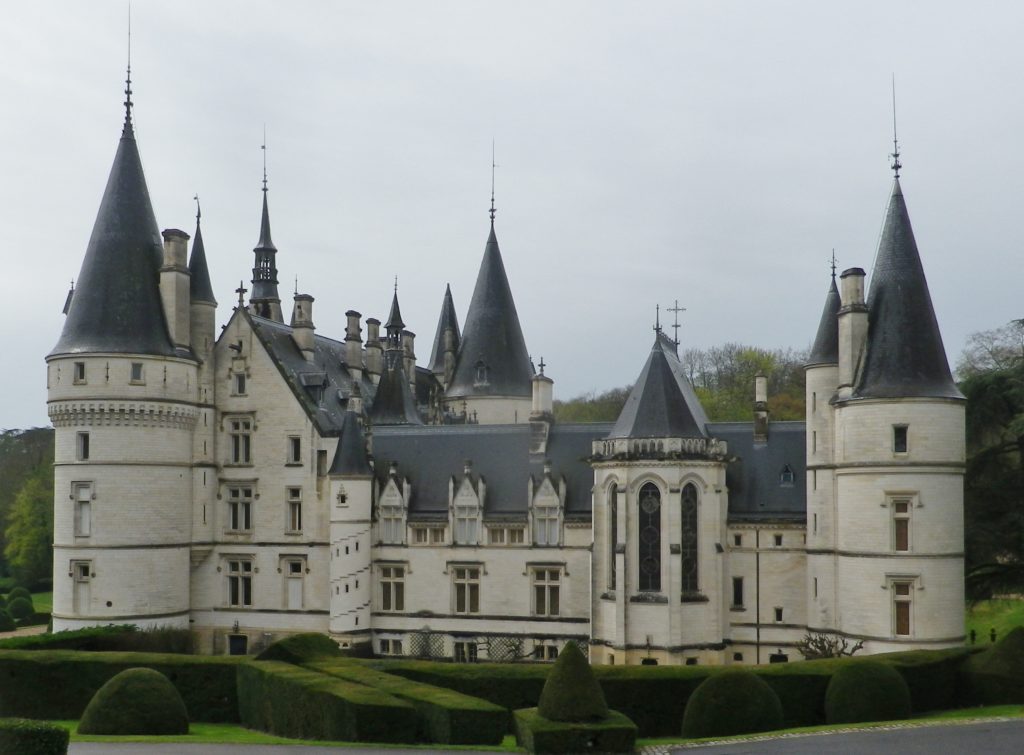
Considerably brighter, although still a bit “smoky” and overcast, I took some photographs of Pouilly once back in the village center. As the village came back to life after the lunch break, wineries reopened, and I took the opportunity to savor some of the local wine. While I still don’t really like kimmeridgian marl, or wine from the grapes that grow on it, I came to appreciate the unique flavor it imparts to the wine. Meanwhile, I came to love limestone, and the unique effect it has on these delicious wines!
